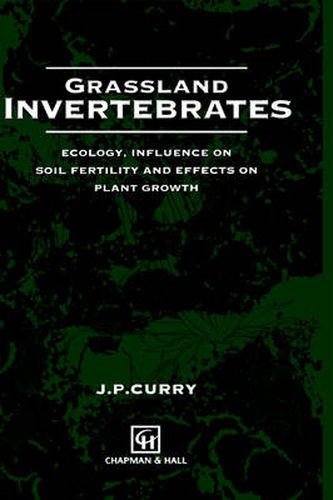Readings Newsletter
Become a Readings Member to make your shopping experience even easier.
Sign in or sign up for free!
You’re not far away from qualifying for FREE standard shipping within Australia
You’ve qualified for FREE standard shipping within Australia
The cart is loading…






This title is printed to order. This book may have been self-published. If so, we cannot guarantee the quality of the content. In the main most books will have gone through the editing process however some may not. We therefore suggest that you be aware of this before ordering this book. If in doubt check either the author or publisher’s details as we are unable to accept any returns unless they are faulty. Please contact us if you have any questions.
Grasslands comprise more than a quarter of the earth’s land surface. In addition to supporting a wide range of vertebrates, such as domestic livestock and a variety of game species, grassland is the natural habitat for a wide range of invertebrate species. This book considers those which occur in grassland, and their impact on soil fertility and herbage growth. It describes what grassland is like as a habitat for invertebrates, the groups which occur there and their abundance. In the opening chapter, the major grassland types are considered and the features which influence the distribution and abundance of the invertebrates which inhabit them are discussed. Next, the major taxonomic groups are reviewed in turn, with a brief account of their biology and ecology and of their ecosystem role. Some general features of grassland invertebrate communities are then described and the factors which influence the population densities of their constituent species are considered. Particular attention is given to the ways in which populations are influenced by management practices. The final chapter deals with the various ways in which invertebrates influence important grassland processes through ingestion of organic matter, through interaction with micro-organisms, through soil working and through feeding on plant tissue. The control of injurious species is considered, with particular emphasis on the potential for achieving this through manipulating grassland management practices.
$9.00 standard shipping within Australia
FREE standard shipping within Australia for orders over $100.00
Express & International shipping calculated at checkout
This title is printed to order. This book may have been self-published. If so, we cannot guarantee the quality of the content. In the main most books will have gone through the editing process however some may not. We therefore suggest that you be aware of this before ordering this book. If in doubt check either the author or publisher’s details as we are unable to accept any returns unless they are faulty. Please contact us if you have any questions.
Grasslands comprise more than a quarter of the earth’s land surface. In addition to supporting a wide range of vertebrates, such as domestic livestock and a variety of game species, grassland is the natural habitat for a wide range of invertebrate species. This book considers those which occur in grassland, and their impact on soil fertility and herbage growth. It describes what grassland is like as a habitat for invertebrates, the groups which occur there and their abundance. In the opening chapter, the major grassland types are considered and the features which influence the distribution and abundance of the invertebrates which inhabit them are discussed. Next, the major taxonomic groups are reviewed in turn, with a brief account of their biology and ecology and of their ecosystem role. Some general features of grassland invertebrate communities are then described and the factors which influence the population densities of their constituent species are considered. Particular attention is given to the ways in which populations are influenced by management practices. The final chapter deals with the various ways in which invertebrates influence important grassland processes through ingestion of organic matter, through interaction with micro-organisms, through soil working and through feeding on plant tissue. The control of injurious species is considered, with particular emphasis on the potential for achieving this through manipulating grassland management practices.